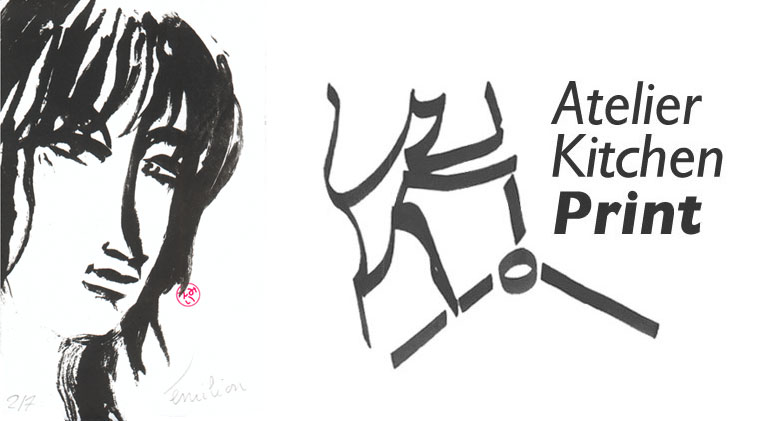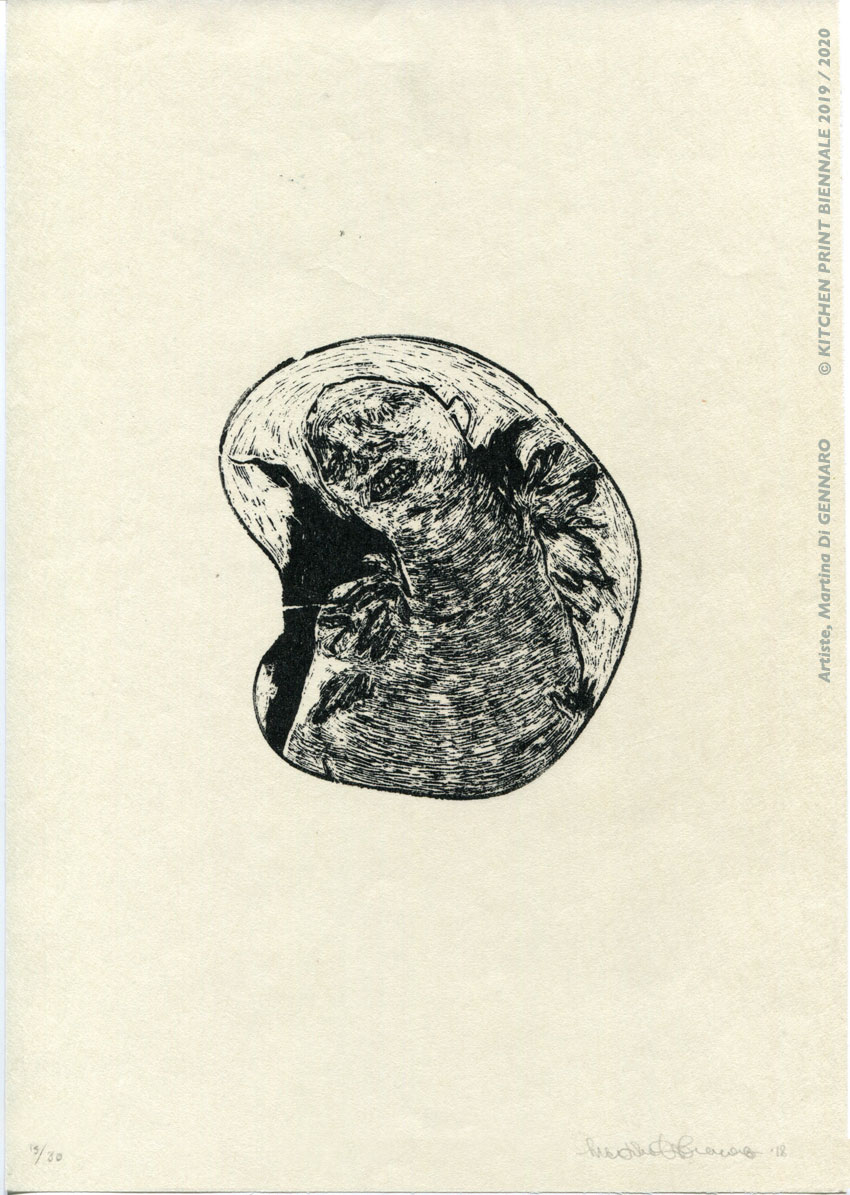Martina Di Gennaro
- Creative Fields GALLERY 2019/2020
- Martina Di Gennaro Title 'Poor Ophelia', woodcut, 29 x 21 cm, edition 15/30. Italy
With the features of a pre-Columbian queen, this Ophelia, decidedly more alive than dead, defies her attribute of «poor», to become the ruler of the waters and of what floats. Fearless faces the mirror, fearless crosses it and gives birth to a limbus that is no longer swamp or agony, but a plausible, desirable choice of the elsewhere to stay.
In technical language, the limbus is a graduated part in an arc of a circle (measuring instrument). In botanical language this refers to the leaf of the plant and in astronomy the edge of the disk of a tree. It is sometimes confused with the nimbus (with an N) which is the circular disc of light, that painters and sculptors have placed, since Egyptian Antiquity, around the heads of sacred figures. Limbo (from the Latin limbus, “margin, fringe”) designates a state of the beyond located at the margins of hell. By extension, they denote an intermediate and fuzzy state. Editor’s note Info Wikipedia
Avec les traits d’une reine précolombienne, cette Ophélie, décidément plus vivante que morte, défie son attribut de «pauvre», pour devenir maîtresse des eaux et de ce qui flotte. Intrépide, elle fait face au miroir, le traverse sans peur et donne naissance à un limbe qui n’est plus marécage ou agonie, mais un choix plausible et désirable de l’ailleurs pour rester.
Dans le langage technique, le limbe est une partie graduée en arc de cercle (instrument de mesure). Dans le language botanique cela désigne la feuille de la plante et en astronomie le bord du disque d’une arbre. On le confond parfois avec le nimbe (avec un N) qui est le disque de lumière circulaire, que les peintres et les sculpteurs placent, depuis l’Antiquité égyptienne, autour de la tête des personnages sacrés. Les limbes (du latin limbus, « marge, frange ») désigne un état de l’au-delà situé aux marges de l’enfer. Par extension, ils désignent un état intermédiaire et flou. NDLR Info Wikipédia

